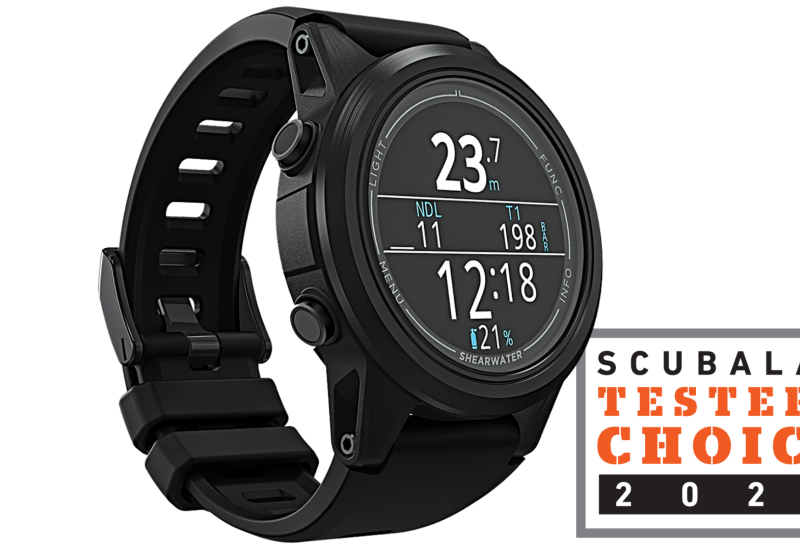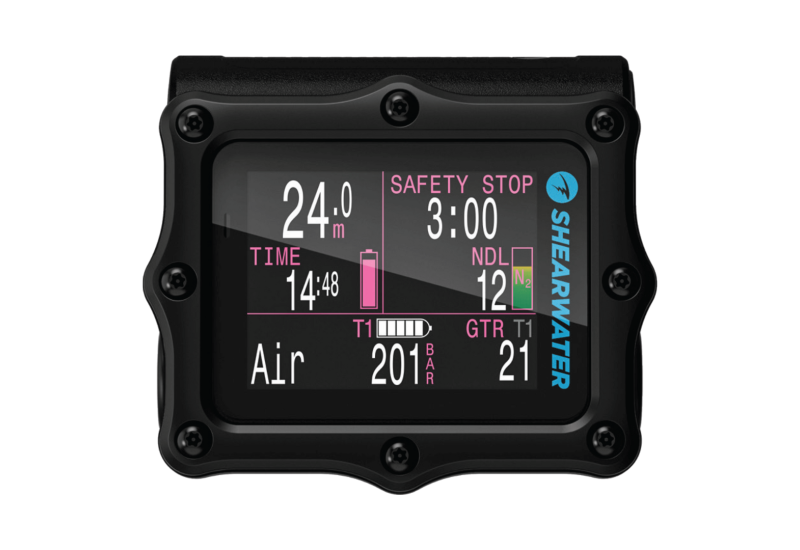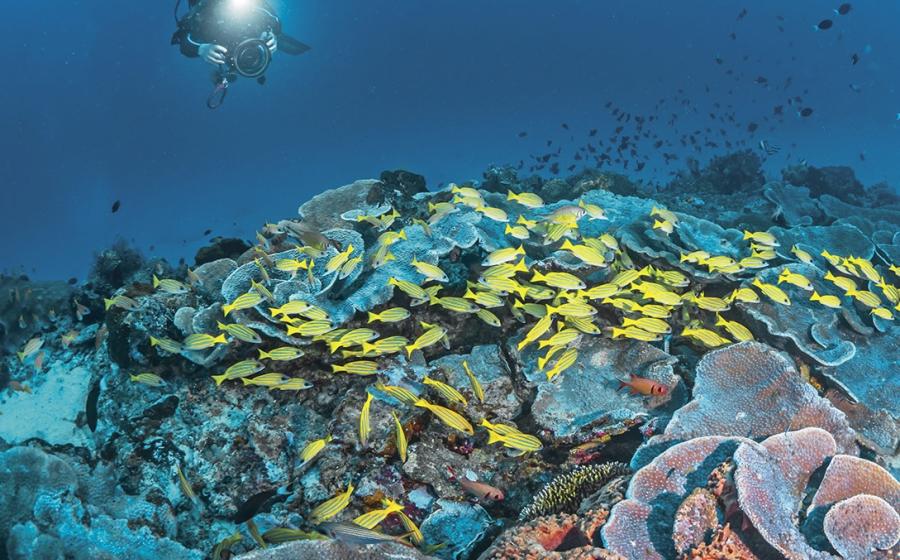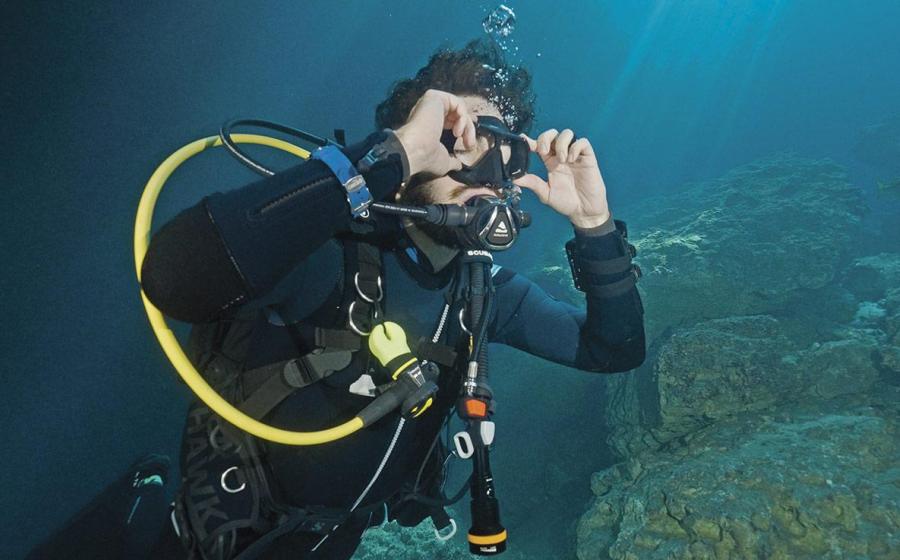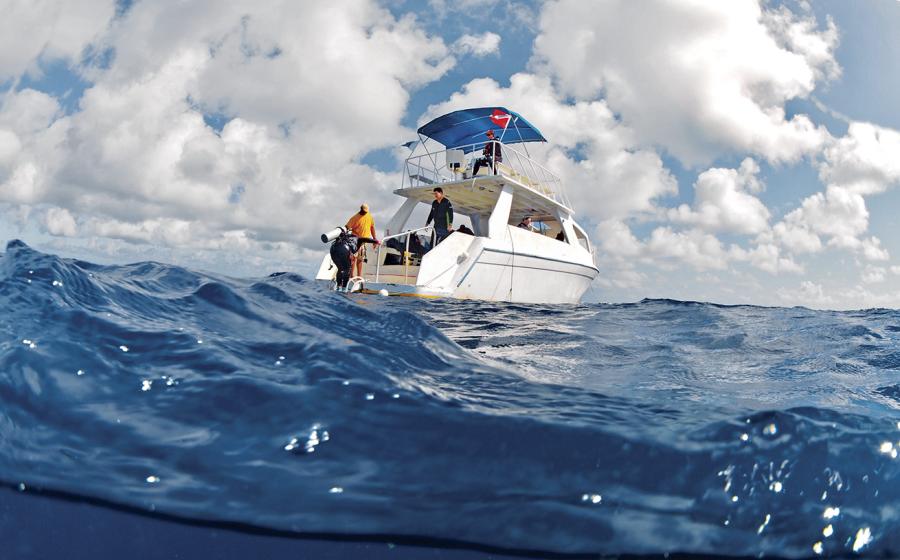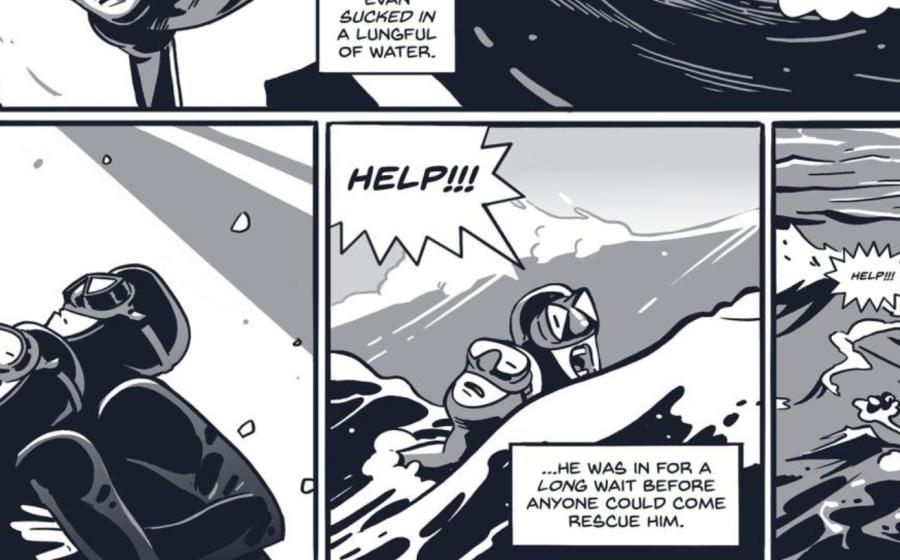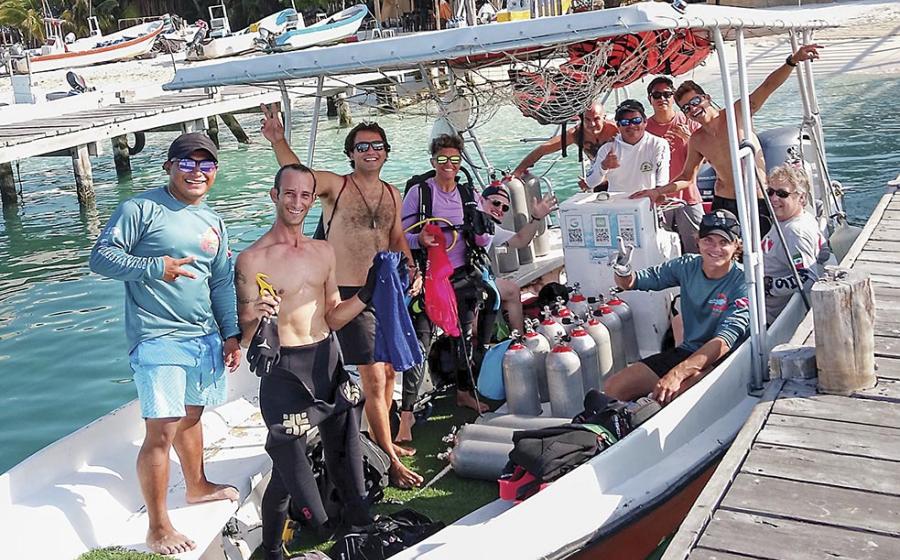ScubaLab - Bonus Review: Suunto's Hel02 Technical DC/Dive Planner
By Vahagn Nahabedian Suunto has released its first technical dive computer and dive planner with full mixed gas capability. Called the Hel02, this computer and its dive planning software allow divers to make technical dives beyond normal recreation limits by using multiple gas mixtures on the same dive. The Hel02 can be used with air and nitrox as well as with oxygen, heliox and trimix. Technical divers tailor their breathing mixtures according to the depth of their dive and the duration of decompression they expect. While nitrox is now common among recreational divers, the high oxygen percentages used by technical divers are not. Heliox is a mixture of helium and oxygen and trimix is a mixture of oxygen, helium and nitrogen. Both heliox and trimix allow you to dive deeper with less risk of narcosis, the narcotic effect of nitrogen at depth, and reduce breathing resistance. Oxygen and nitrox with high oxygen content are used to accelerate decompression. Special training and procedures are required to safely conduct technical dives with mixed gas. However, technical divers are becoming more common, and now a major computer manufacturer has introduced a technical dive computer specifically for this growing group of divers. The Hel02 is easy to set up and even easier to use. Navigating through the screens has a logical flow. The owners manual is clear and easy to follow. There are four buttons to help navigate through the different screens. Gas switching during a dive couldn’t be easier. The essential dive data is clearly visible both in and out of the water, although some divers may find it difficult to read some of the smaller fixed screen graphics. The Hel02 has five Modes: Time, Mixed Gas, Gauge, Plan and Memory. The Mixed Gas Mode is based on Dr. Bruce Wienke’s modified RGBM model. It can be used with up to eight different gas mixtures with oxygen content ranging from eight percent up to 100 percent and Helium up to 92 percent on dives to a maximum depth of 393 feet. The Hel02 allows continuous decompression; as you ascend the decompression ceiling continually readjusts rather than relying on fixed ten-foot stops. The computer’s instructions during decompression are very clear and the countdown is displayed in seconds during the deep stops which seems to make the time pass more quickly. There are divers who think that using printed tables or decompression profiles scribbled by hand and squeezed onto a slate is the only proper way to dive. If this describes your philosophy, well frankly, you probably stopped reading a while ago. If you didn’t, then you’ll be pleased to learn that the Hel02 can be switched to Gauge Mode and used as a bottom timer and depth gauge. It also has a stopwatch function in Gauge Mode to help monitor the proper time at a planned decompression stop so you can get rid of that cheap stopwatch with its dubious 300-meter rating you have clipped to your harness. The Plan Mode is limited to no-decompression dives, making it of little use to the technical diver. However, the Hel02 comes paired with Suunto’s Dive Planner software that allows real planning of technical dives. Upload your planned gasses right onto the Hel02, along with all necessary blending instructions, and after the dive you can analyze the dive and track real gas consumption. Many technical divers have spent a small fortune buying decompression software, but this fantastic software is available for free from Suunto’s website. The Hel02’s Memory Mode has a logbook function that allows you to review past dives. We liked having the ability to review the dive profile to track when gas switches were made or review their bookmarks on the surface after the dive. Bottom line: The Hel02 is definitely designed with the technical diver in mind. The computer and planning software are very good compared to other computers we’ve used. It is simple to plan dives, upload gasses and is easy to use during a dive. It’s the best computer we’ve used on a technical dive for gas switching, and we loved the planning software. A question for Suunto: Are we going to see a discounted price for a pair? After all, for us technical divers, redundancy is important! Price: $1,495 w/transmitter and Dive Planner, $1,095 w/Dive Planner only; aqualung.com. What we liked:
- Easy to use
- Owners manual very clear
- Provides only the essential features
- Navigating gas switches
- Managing decompression
- Free dive planning/gas mixing software
What we didn’t like: - Some text was hard to read
- Plan Mode doesn’t allow for planning decompression dives
What we’d change: - Allow the backlight to remain on throughout the dive
- Include air time remaining info
Vahagn Nahabedian has been a ScubaLab test diver for five years, is an instructor with Naui and Padi and has made well over 1500 dives. He is a recreational and technical diver with both Scuba and rebreathers. His adventures have taken him to many foreign destinations but he calls Southern California home, and can be found diving the sea caves of the Channel Islands or deep wrecks along the California coast.
By Vahagn Nahabedian Suunto has released its first technical dive computer and dive planner with full mixed gas capability. Called the Hel02, this computer and its dive planning software allow divers to make technical dives beyond normal recreation limits by using multiple gas mixtures on the same dive. The Hel02 can be used with air and nitrox as well as with oxygen, heliox and trimix. Technical divers tailor their breathing mixtures according to the depth of their dive and the duration of decompression they expect. While nitrox is now common among recreational divers, the high oxygen percentages used by technical divers are not. Heliox is a mixture of helium and oxygen and trimix is a mixture of oxygen, helium and nitrogen. Both heliox and trimix allow you to dive deeper with less risk of narcosis, the narcotic effect of nitrogen at depth, and reduce breathing resistance. Oxygen and nitrox with high oxygen content are used to accelerate decompression. Special training and procedures are required to safely conduct technical dives with mixed gas. However, technical divers are becoming more common, and now a major computer manufacturer has introduced a technical dive computer specifically for this growing group of divers. The Hel02 is easy to set up and even easier to use. Navigating through the screens has a logical flow. The owners manual is clear and easy to follow. There are four buttons to help navigate through the different screens. Gas switching during a dive couldn’t be easier. The essential dive data is clearly visible both in and out of the water, although some divers may find it difficult to read some of the smaller fixed screen graphics. The Hel02 has five Modes: Time, Mixed Gas, Gauge, Plan and Memory. The Mixed Gas Mode is based on Dr. Bruce Wienke’s modified RGBM model. It can be used with up to eight different gas mixtures with oxygen content ranging from eight percent up to 100 percent and Helium up to 92 percent on dives to a maximum depth of 393 feet. The Hel02 allows continuous decompression; as you ascend the decompression ceiling continually readjusts rather than relying on fixed ten-foot stops. The computer’s instructions during decompression are very clear and the countdown is displayed in seconds during the deep stops which seems to make the time pass more quickly. There are divers who think that using printed tables or decompression profiles scribbled by hand and squeezed onto a slate is the only proper way to dive. If this describes your philosophy, well frankly, you probably stopped reading a while ago. If you didn’t, then you’ll be pleased to learn that the Hel02 can be switched to Gauge Mode and used as a bottom timer and depth gauge. It also has a stopwatch function in Gauge Mode to help monitor the proper time at a planned decompression stop so you can get rid of that cheap stopwatch with its dubious 300-meter rating you have clipped to your harness. The Plan Mode is limited to no-decompression dives, making it of little use to the technical diver. However, the Hel02 comes paired with Suunto’s Dive Planner software that allows real planning of technical dives. Upload your planned gasses right onto the Hel02, along with all necessary blending instructions, and after the dive you can analyze the dive and track real gas consumption. Many technical divers have spent a small fortune buying decompression software, but this fantastic software is available for free from Suunto’s website. The Hel02’s Memory Mode has a logbook function that allows you to review past dives. We liked having the ability to review the dive profile to track when gas switches were made or review their bookmarks on the surface after the dive. Bottom line: The Hel02 is definitely designed with the technical diver in mind. The computer and planning software are very good compared to other computers we’ve used. It is simple to plan dives, upload gasses and is easy to use during a dive. It’s the best computer we’ve used on a technical dive for gas switching, and we loved the planning software. A question for Suunto: Are we going to see a discounted price for a pair? After all, for us technical divers, redundancy is important! Price: $1,495 w/transmitter and Dive Planner, $1,095 w/Dive Planner only; aqualung.com. What we liked:
- Easy to use
- Owners manual very clear
- Provides only the essential features
- Navigating gas switches
- Managing decompression
- Free dive planning/gas mixing software What we didn’t like:
- Some text was hard to read
- Plan Mode doesn’t allow for planning decompression dives What we’d change:
- Allow the backlight to remain on throughout the dive
- Include air time remaining info
Vahagn Nahabedian has been a ScubaLab test diver for five years, is an instructor with Naui and Padi and has made well over 1500 dives. He is a recreational and technical diver with both Scuba and rebreathers. His adventures have taken him to many foreign destinations but he calls Southern California home, and can be found diving the sea caves of the Channel Islands or deep wrecks along the California coast.



